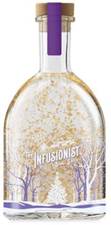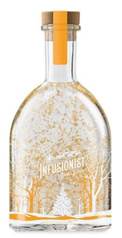Why did Aldi’s gin bottles infringe M&S' registered designs?
- Rosie Burbidge

- Feb 20, 2023
- 3 min read
Updated: Feb 21, 2023

Marks & Spencer has won a registered design infringement case against rival Aldi, relating to designs of gin bottles with gold flakes and an integrated light.
M&S has four UK registered designs, each showing a photograph with a priority date of 15 December 2020. Two of the designs featured gold flakes and two clearly showed an integrated light.
The M&S Designs
Aldi launched its gin liqueurs in November 2021 for the Christmas market. They were available in two flavours (clementine and blackberry). Unlike the M&S designs, the Aldi bottles included some text.
The Aldi bottles
Infringement tests
There was no challenge to validity; the only question was whether Aldi’s designs infringed the designs. Consequently, the judge, His Honour Judge Hacon, went through the established tests for infringement.
Notably, the judge found that the designer had “considerable freedom, particularly with regard to the shape of the bottle and the design to be printed on it” and “There was no design constraint requiring the gin to be illuminated.”
HHJ Hacon also rejected Aldi’s argument that certain features of the designs were solely dictated by technical function, saying they were rather “aspects or consequences of aesthetic choices made by the designer”.
Comparison of overall impressions
The judge considered the design corpus (comprising the large number of bottles of gin available on the market) and concluded that only one of these had the same shape and a snow effect – but it had no integrated light.
He said that the design corpus has a bearing on the assessment of infringement because of the way that human observation works:
“There is a continuous spectrum of possibilities but the more strikingly different the registered design is from the design corpus generally and the fewer in the corpus that are close to it in appearance, the more likely it is that an accused design with something of the registered design’s unusual features will produce the same overall impression.”
In this case, the judge identified five features that the informed users would note as being in common between one or more of the registered designs and the Aldi bottle: (1) The identical shapes of the two bottles; (2) what appear to be identical shapes of the two stoppers; (3) a winter scene covering all of the straight portion, including tree silhouettes; (4) a snow effect; and (5) an integrated light.
He found that each of these similarities “would appear significant to the informed user and cumulatively they would be striking.”
Against that, there were six differences, including the detail and colour of the winter scene, the branding and small differences in the stoppers. The judge described these as “differences of relatively minor detail which do not affect the lack of difference in the overall impressions produced by the Aldi bottles on the one hand and each of the RDs in suit on the other”.
What does this mean?
Lookalike products are a constant challenge for supermarkets, given the competitive nature of the market and the willingness of consumers to shop around. M&S and Aldi have history in this regard, as the former publicly accused the latter of copying its Colin the Caterpillar cake; that matter was apparently settled last year.
The main takeaway from this case is that M&S showed considerable foresight in obtaining the four design registrations in 2021 (in fact, it had five registrations but one was not involved in this judgment).
While M&S might have been able to bring an action based on unregistered design rights, copyright or even passing off, in the absence of registered designs, it would likely have found it much harder to succeed.
Design registration is a relatively cheap process that can be useful for a wide range of products, so is always worth considering as part of your IP strategy.
Another point to note is that interpretation of the scope of protection of designs is easier when the image shows a photograph (as in this case) compared to a line drawing. The only point of contention was whether the designs included an integrated light as a feature; having consulted the images as they appeared online, the judge concluded that two of them did and two did not.
For more information about how design registrations can support your IP strategy, please get in touch.
To find out more about the issues raised in this blog contact Rosie Burbidge, Intellectual Property Partner at Gunnercooke LLP in London - rosie.burbidge@gunnercooke.com









